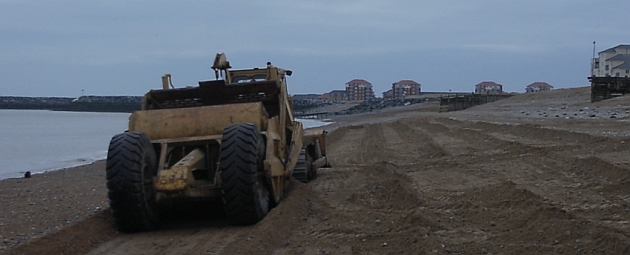Recycling
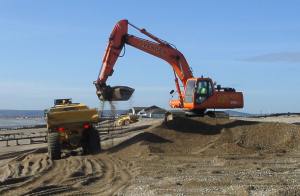 The rate at which shingle drifts from west to east varies from place to place around the bay. Some areas regularly lose material, some do not change and others periodically gain it. To try and redress the balance, shingle is moved from areas of accretion to those depleted by wave action. Dumptrucks are loaded by an excavator and move between 18 and 22cu.m with every journey.
The rate at which shingle drifts from west to east varies from place to place around the bay. Some areas regularly lose material, some do not change and others periodically gain it. To try and redress the balance, shingle is moved from areas of accretion to those depleted by wave action. Dumptrucks are loaded by an excavator and move between 18 and 22cu.m with every journey.
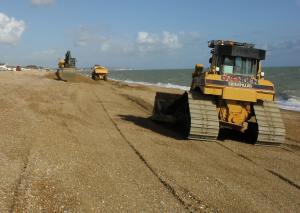 Deposited shingle is then graded by bulldozer. This is an effective way of bolstering eroded defences during the winter when it is not possible for a dredger to bring in new shingle by sea. Whereas re-profiling is totally reactive to weather conditions recycling occasionally involves an element of planning. Areas usually recycled are:
Deposited shingle is then graded by bulldozer. This is an effective way of bolstering eroded defences during the winter when it is not possible for a dredger to bring in new shingle by sea. Whereas re-profiling is totally reactive to weather conditions recycling occasionally involves an element of planning. Areas usually recycled are:
- Sovereign Harbour Martello tower to the rock revetment
- Beachlands campsite to Beachlands
- Normans Bay outfall to Normans Bay East
- Cooden Beach to Herbrand Walk
Three periods of recycling activity will occur in a normal year: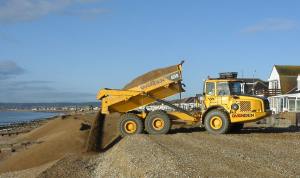
- In early autumn. This avoids working in summer and prepares for the onset of winter
- January. Coinciding with the period of winter storms and the largest natural movement of material. The duration and extent can be highly variable.
- Easter. Reinstating the beach along the whole frontage following the winter season. Again duration and extent depend on the amount of natural movement of beach material.
In particularly stormy winters such as winter 2013-14, recycling outside these standard periods will occur as is necessary to maintain the integrity of the defences. That winter recycling was continuous from 31 December 2013 to late April 2014. It is generally is a weekday activity, taking between 10 & 15 days, and working between 07:30 and 17:00. However, during prolonged storms work has been carried out tidally and seven days a week.
Examples of beach change following recycling
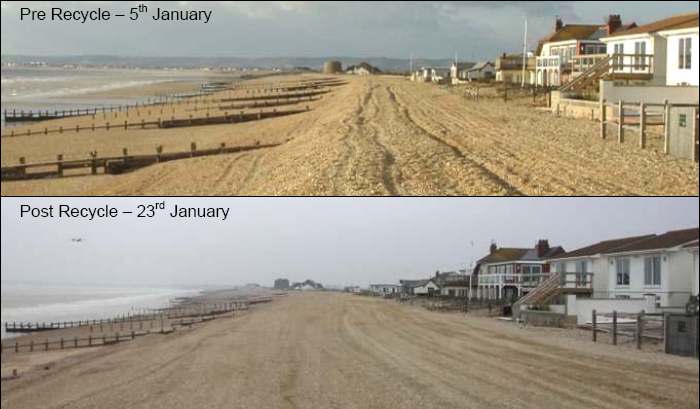
Beach at Normans Bay East before and after recycling in January 2006
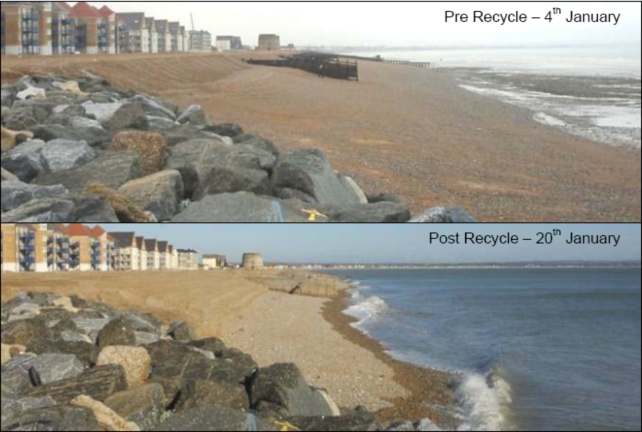
Beach at Sovereign Harbour before and after recycling in January 2006
We also undertake a more simple version of recycling. This done using a "box" or earth scraper, more commonly seen on earthwork projects such as highway construction.The box is attached to the bulldozer and used to scrape up a layer of surface material. It is then taken to an erosion area where the material is released onto the foreshore. Usually most of this work can be done in front of the main beach crest, keeping machines further from houses than is the case with the more typical process.
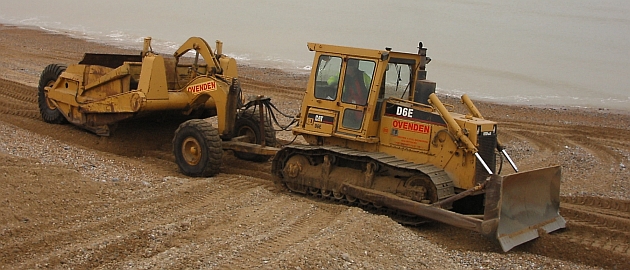
It is an effective way of moving relatively small amounts of beach, usually between 200 and 300 cu.m per tide. This a lot less than using dump trucks, but can be carried out without the need to import additional plant. Whereas the bulldozer on its own can only push up and down the same profile, the box allows shingle to be moved along the beach thereby adding material to eroded areas.
This technique had been regularly used at Sovereign Harbour and 'White Horses', but is occasionally used at Beachlands and Normans Bay East. As groynes deteriorate or become buried it does make the process easier because it is difficult to ramp over groynes in the same way as can be done for dump trucks.
